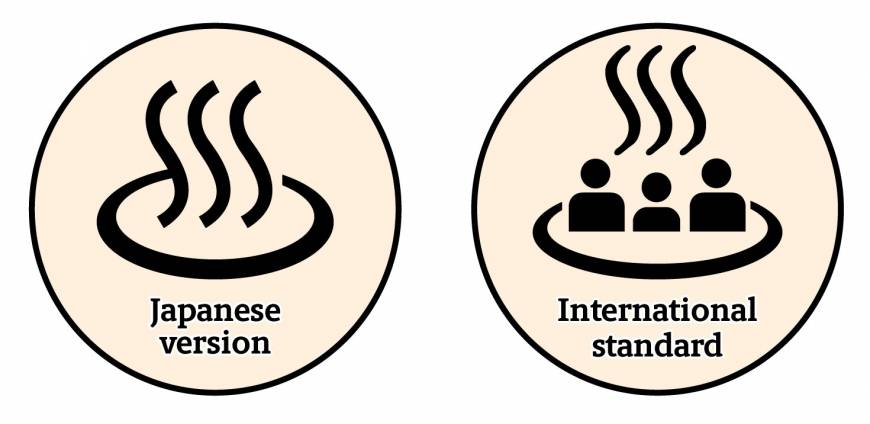 KYODO
KYODOhttp://www.japantimes.co.jp/news/2017/04/05/national/row-about-japans-hot-spring-symbol-ends-in-compromise/#.WOULQ4h97IU
NATIONAL
Row about Japan’s hot-spring symbol ends in compromise
JIJI
Japanese innkeepers and the industry ministry have compromised in a dispute over a plan to change an iconic pictogram for hot springs — allowing the use of both the old mark and a new one.
The conflict originated from studies launched by the Ministry of Economy, Trade and Industry aimed at revising public symbols in a bid to make them more understandable to visitors from abroad as part of preparations for the 2020 Olympic Games.
While the Japanese Industrial Standards recognize some 140 pictograms adopted on occasions including the 1964 Tokyo Olympics, many of them are different from standards set by the International Organization for Standardization, or ISO, and may be misinterpreted by overseas visitors.
METI therefore set up a panel of experts in July to consider revising them in a way that meets ISO standards.
A proposed change for the hot spring mark aroused public attention as innkeepers voiced strong opposition.
The existing pictogram has three curved vertical lines, symbolizing steam, within a circular line representing a hot spring bath.
The ministry proposed adding images indicating three people, expressing worries that the existing symbol could be misinterpreted as representing a restaurant that offers hot food.
The proposed change met with protests from many innkeepers.
“The symbol is widely accepted by Japanese people,” said Takako Sakurai, who heads the association of hot spring inns in Annaka, Gunma Prefecture, regarded as the birthplace of the mark. “It should not be changed.”
Members of the expert panel also called for promoting the symbol abroad without amendment.
The proposal by METI was also opposed by operators of inns and other hot spring resort facilities in many parts of Japan, including those in Beppu, Oita Prefecture, credited with increasing public recognition of the mark.
In late January, the ministry decided to both retain the traditional mark and also introduce the revamped symbol, allowing innkeepers and other parties to choose between them.
According to a METI survey of Japanese and non-Japanese, 62.9 percent considered the traditional mark more understandable, while the proposed change was supported by 36.1 percent.
Among other pictograms, those for locations such as parking lots and aid stations will adopt new ISO-based symbols after a two-year transition period.
The ministry plans to introduce new pictograms, including the one for hot springs, in July.
沒有留言:
張貼留言